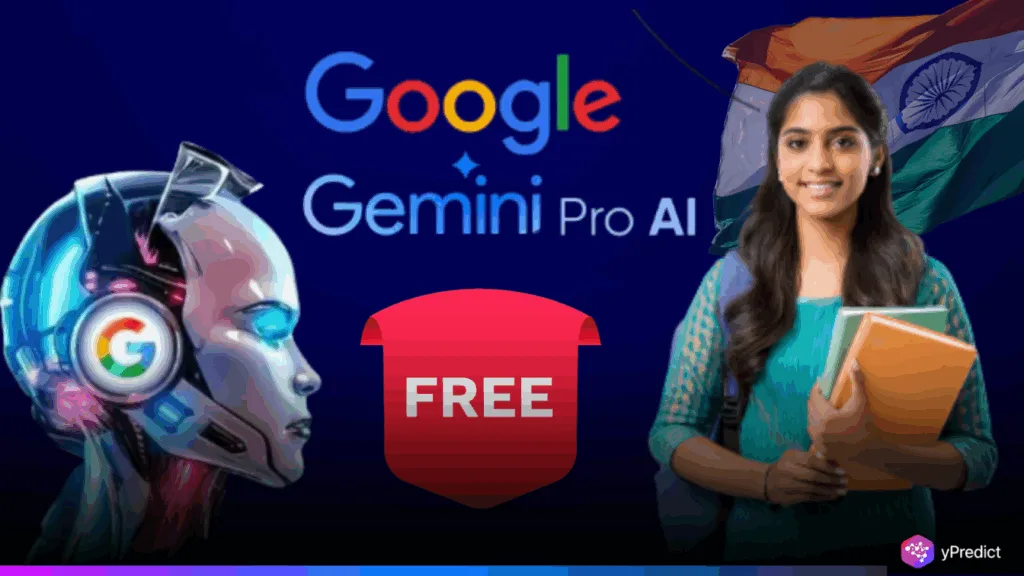
Google is offering a free one-year subscription to its Gemini AI Pro plan for eligible students in India (aged 18+). Sign-ups are open until September 15, 2025. This initiative follows a Google-Kantar study revealing that 75% of Indians want a daily collaborator. And 95% of student users feel more confident using Gemini. The plan includes Gemini 2.5 Pro access and 2 TB of cloud storage. Integrated AI tools like NotebookLM, Gemini Live, Deep Research, and Veo 3. It’s designed to support students in exam prep, writing, research, and creative projects. Marking a significant step in democratizing advanced AI.
Meeting Real Educational and Creative Demands
The student-focused launch of Gemini AI Pro is not just a giveaway. It reflects a growing shift in how younger generations interact with AI. In a nation where educational competition is intense and resources are often stretched. Google’s offer addresses genuine needs for academic support, creative exploration, and digital productivity. From understanding STEM topics to prepping for job interviews or brainstorming essays. Students now get real-time support through tools previously reserved for professionals or enterprises.
Gemini 2.5 Pro brings Google’s most powerful multimodal AI directly to students’ smartphones and laptops. With the addition of Deep Research for personal study, NotebookLM with 5x higher capacity for organizing notes, and Veo 3 for AI-generated videos. The platform becomes a true educational companion, not just a chatbot. The fact that it also integrates with Google Workspace tools like Docs and Sheets positions it squarely within students’ existing workflows.
This rollout isn’t merely about India; it signals how major AI players are competing to become embedded in the day-to-day lives of younger users. By targeting students now, Google is investing in a generation that will grow up expecting AI-enhanced education. This move also expands the reach and training exposure of Gemini models, increasing real-world usage data and sharpening AI performance.
Broader AI Implications: Personalization, Reach, and Market Strategy
This initiative exemplifies how tech giants are shifting from showcasing AI capabilities to embedding them in life’s daily rhythms, especially among emerging economies and younger demographics. India’s 250+ million student population represents not just a huge educational opportunity but also an ideal proving ground for real-time, high-volume AI interaction. For Google, offering a year of free access is a calculated move to build user habits, expand Gemini’s training footprint, and assert dominance in the AI assistant space. This also underscores a trend toward personalized AI ecosystems. Tools like NotebookLM and Gemini Live are not generic; they adapt to user context, subject matter, and goals. Offering this experience to students helps Google normalize AI-enhanced learning as a baseline expectation.
From an infrastructure standpoint, expanding Gemini to this scale requires robust optimization of inference workloads, especially in latency-sensitive contexts like exam prep or brainstorming sessions. This will likely feed back into how Gemini’s models are fine-tuned, helping improve performance under India’s bandwidth and hardware constraints. Strategically, this also challenges competitors like OpenAI and Microsoft Copilot to respond in kind, possibly sparking a new round of education-centric AI plans. The future of AI adoption isn’t just about capabilities; it’s about being first to deliver reliable, daily value.
A Strategic Win for AI Access and Education, What’s Your Take?
Google’s free Gemini AI Pro plan for students is more than a feel-good gesture; it’s a strategic push into the next phase of AI adoption: real-world utility at scale. By embedding advanced AI into everyday study routines, Google is building both brand loyalty and data pipelines while giving students meaningful support. The rollout raises big questions: Will this accelerate AI’s role in education globally? How will competitors respond? And are students prepared to use these tools responsibly and effectively? One thing is clear: AI is becoming a standard part of learning. What’s your take? Does this raise the bar or raise new concerns?






